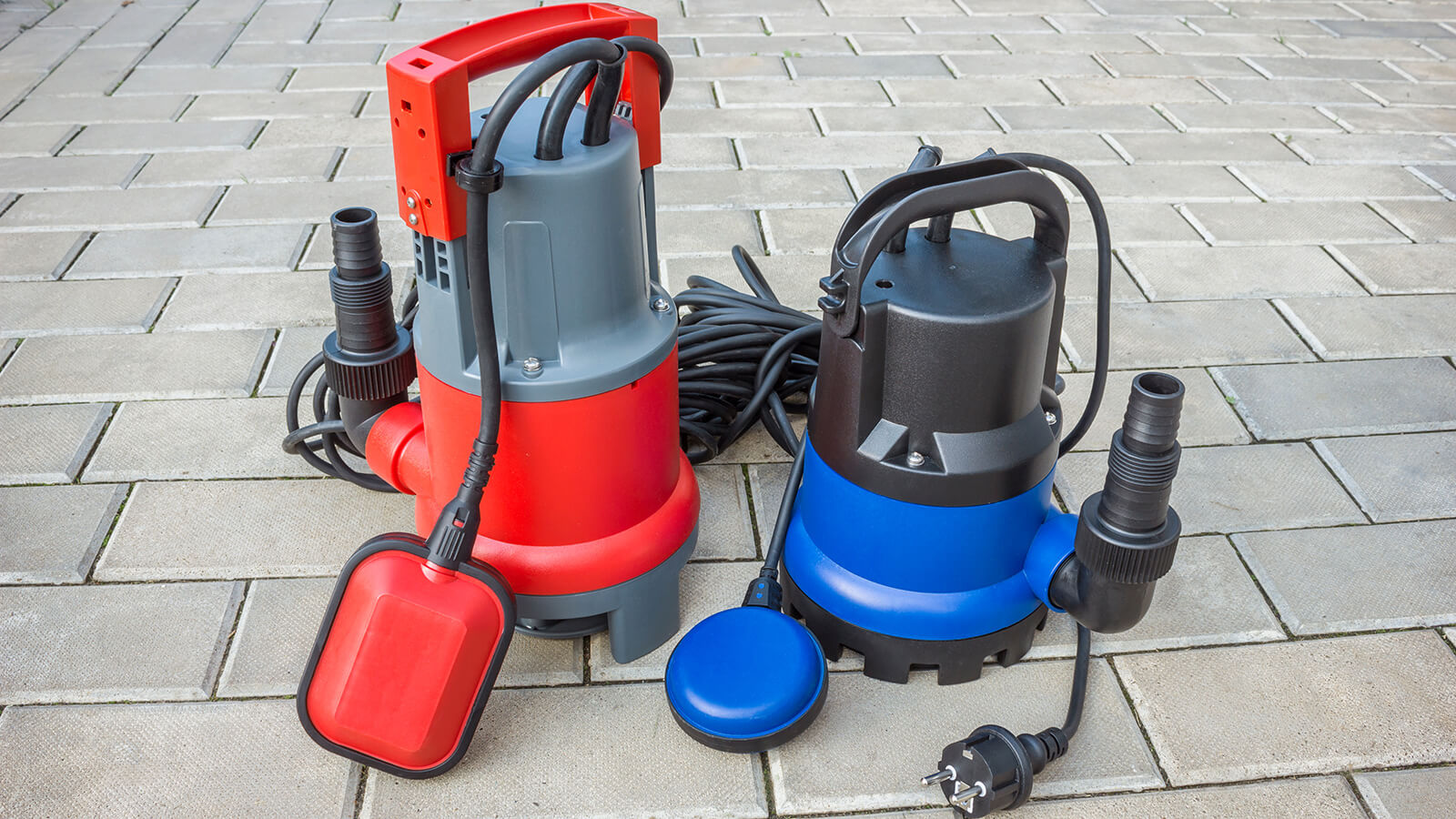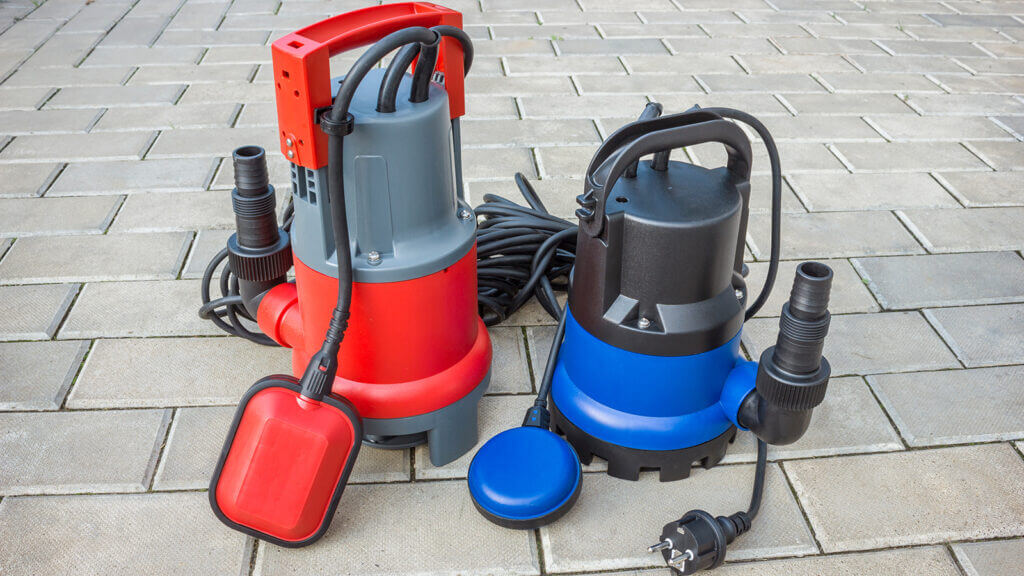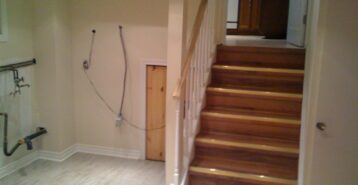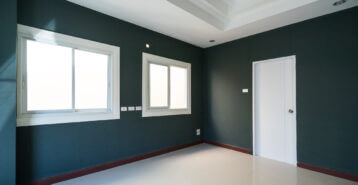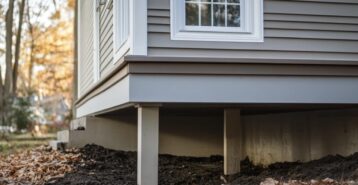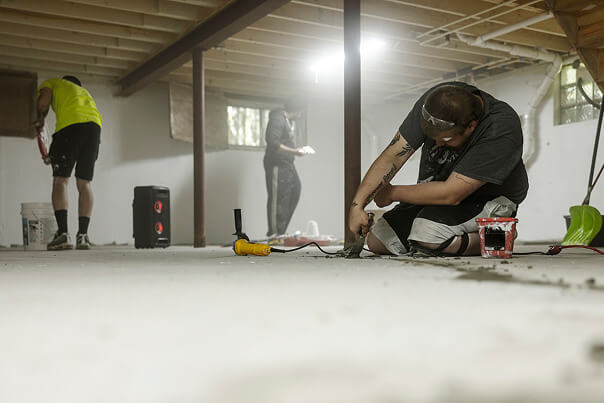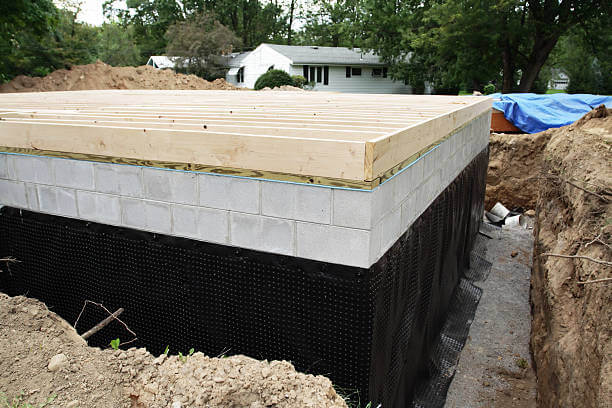What Is a Sump Pump and Why Do They Matter?
A sump pump is a small appliance that sits in a pit (called a sump basin or sump tank) in your basement or crawl space. When water starts to collect, the pump automatically kicks on and pushes the water out of your home through a drain pipe. In simple terms, it keeps rising groundwater and rainwater from turning into a costly flood.
Why does that matter? Because even a small clean water leak — like from a burst water line — can cost over $1,600 in repairs. If stormwater enters your basement, it usually brings along mud, debris, and bacteria that can create health risks on top of property damage (learn more in our guide to the types of water damage). Installing a sump pump is like buying insurance: it can save you thousands by stopping damage before it starts.
In this guide, we’ll break down the different types of sump pumps, what installation costs look like, and the key factors that affect your final price.
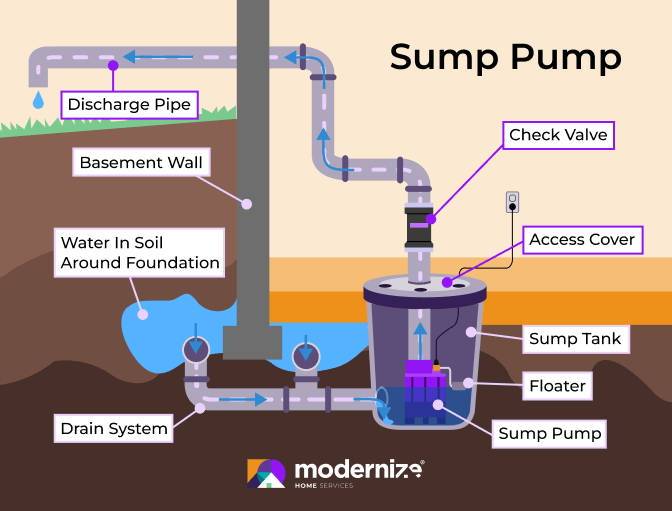
What Are the Main Types of Sump Pumps?
Not all sump pumps work the same way, and the right one for you depends on your home and how much water you need to manage. Here are the most common options:
- Submersible pumps: Installed inside the sump pit and fully covered by water. These are powerful, fast, and reliable for homes that deal with heavy flooding.
- Pedestal pumps: Sit above the pit with a hose that extends down to the water. They’re easier to service and less expensive but can struggle with debris buildup. Best for lighter water issues.
- Water-powered pumps: Run on your home’s water pressure instead of electricity. A good backup option if you live in an area with frequent power outages, though they require steady water pressure to work well.
- Combination pumps: Pair a primary pump with a backup battery system. This gives you extra protection during major storms when power is more likely to fail.
- Battery-powered backup pumps: Kick in automatically if the electricity goes out. They’re reliable for short outages, but in areas where power stays down for days, you’ll need a high-capacity battery.
For homes that deal with frequent flooding, sump pumps are often paired with other solutions like basement waterproofing and crawl space encapsulation. Read more in our guide on different basement waterproofing methods.
How Much Does It Cost to Install a Sump Pump?
Installing a sump pump usually costs between $200 and $4,000, with most homeowners spending about $1,200 on average. The final price depends on the pump you choose, how complex the installation is, and whether extra plumbing or electrical work is needed.
Here’s a quick breakdown of typical costs:
| Type of Pump | Initial Purchase Cost | Installation Cost | Maintenance Cost |
|---|---|---|---|
| Submersible | $90 - $1,000 | $200 - $600 | $100 - $250 annually |
| Pedestal | $80 - $800 | $400 - $800 | $100 - $250 annually |
| Water-Powered | $200 - $900 | $200 - $600 | $100 - $250 annually |
| Combination | $500 - $1,500 | $200 - $600 | $100 - $250 annually |
| Battery-Powered | $150 - $250 | $200 - $400 | $100 - $250 annually |
Initial Purchase Cost
The cost of a sump pump itself can range from $80 to $1,200. Smaller, lower-horsepower pumps are less expensive and work well for homes with mild water issues. Larger, high-horsepower pumps that can move more water quickly cost more but are often worth it in flood-prone areas.
Installation Cost
Labor and setup are often the biggest expenses. A straightforward installation in an accessible basement might only cost a few hundred dollars. But if the contractor needs to:
- Break up concrete for the sump basin,
- Run new plumbing lines, or
- Add extra electrical wiring,
The total can climb toward the high end of the range — sometimes up to $4,000.
Maintenance Costs
No matter which pump you choose, maintenance is an ongoing cost. A sump pump should be inspected and tested at least once a year to make sure it’s ready when heavy rain hits. If your pump is hard to reach — like in a tight crawl space — expect to pay a little more for service.
What Factors Affect Sump Pump Installation Cost?
The price of a sump pump installation doesn’t just depend on the pump itself. Several factors can push your costs up or down. Here are the most common ones to keep in mind when budgeting:
Pump Type, Quality, and Horsepower
The type of sump pump you choose is the biggest cost driver. Submersible and combination pumps are more powerful — and more expensive — than pedestal or battery-powered options. Higher horsepower pumps also cost more but may be necessary if you live in a flood-prone area.
Installation Complexity
The harder it is to install the pump, the more you’ll pay. Simple replacements are usually quick and inexpensive, since the basin and pipes are already in place. But if the job requires new plumbing, electrical work, or access to a tricky crawl space, labor costs rise fast. If your crawl space has structural issues, costs can multiply — read more in our crawl space foundation repair cost guide.
Basement or Crawl Space Size
Working in a large, open basement is simple. Working in a cramped crawl space or an already-flooded area is much harder and often adds labor costs. The tighter or wetter the space, the higher the bill.
Floor Preparation
Your flooring material matters. Thick concrete floors are costly to break apart for a new sump basin. Dirt floors might sound easier, but they often require reinforcement with concrete or other materials — which can sometimes end up costing even more.
Geographic Location
Labor costs vary by region. In general, urban areas and states with higher costs of living (like California) tend to be more expensive. Rural areas may be cheaper, but the availability of skilled contractors can also affect pricing. Don’t forget to check local permit requirements, which can add to the total.
Additional Features
Add-ons like battery backups, water alarms, or smart-home integration will raise the cost but can give you extra peace of mind during severe storms. Some features, like a backup pump, may save you thousands in damage down the road.
Contractor Fees
Every contractor prices jobs differently. Some charge hourly, while others give flat-rate quotes. Additional issues (like an already flooded basement) may also raise costs. Always ask for a detailed, written estimate so you know exactly what you’re paying for.
Can You Install a Sump Pump Yourself or Should You Hire a Professional?
It is possible to install a sump pump on your own, but it’s not the right choice for everyone. The main difference comes down to experience and risk.
DIY Installation
If you’re confident with plumbing, electrical work, and basic construction, you may be able to handle the job yourself. A DIY install typically takes less than a day, though cutting into concrete floors or preparing the basin can add more time.
The main savings come from labor — you’ll only pay for the pump, pipes, and materials. But the risk is high: an improper install can lead to leaks, pump failure, or even more expensive water damage down the road.
DIY is best suited for:
- Homeowners with strong plumbing or construction experience
- Simple pump replacements where the basin and piping already exist
- Situations where cost savings outweigh convenience
Professional Installation
Hiring a contractor costs more upfront, but you get the peace of mind that the job is done correctly. Professionals know how to handle tough basements, unexpected wiring needs, or complicated plumbing layouts. They can also ensure your system meets local building codes.
Professional installation is worth it if:
- You’re installing a sump pump for the first time
- Your basement floods frequently or severely
- You live in an area with storms or hurricanes that can overwhelm a system quickly
- You don’t want to risk costly mistakes
How Can You Save Money on Sump Pump Installation?
Sump pumps aren’t cheap, but there are ways to cut costs without sacrificing protection. Here are a few strategies to keep costs down:
- Choose the Right Type. Make sure the pump matches your needs. A powerful submersible pump is great for flood-prone basements, but if you only deal with light water issues, a less expensive pedestal or battery backup pump may be enough.
- Get Multiple Quotes. Always compare at least three contractor estimates. Make sure you’re comparing the same type of pump and the same scope of work so you’re truly looking at apples-to-apples pricing.
- Keep Up With Maintenance. Annual inspections and testing help you avoid expensive breakdowns. A pump that fails during a major storm can cost far more in flood repairs than routine upkeep ever would.
- Fix Issues Quickly. If you notice your sump pump isn’t working properly, call a professional right away. Small problems like a clogged basin or a failing float switch are cheaper to repair than dealing with a flooded basement later.
- Check the Pump Regularly. Even with annual maintenance, it’s smart to take a quick look at your sump pump after heavy rains. Catching debris buildup or unusual noises early can save you from bigger repair bills.
Conclusion: Is a Sump Pump Worth the Investment?
Think of a sump pump as insurance for your basement or crawl space. When it works properly, it can prevent thousands of dollars in water damage and foundation repair costs and protect your family from the health risks of mold and bacteria.
The cost to install a sump pump usually falls between $200 and $4,000, with most homeowners paying around $1,200. The exact price depends on the pump type, the complexity of installation, and whether you hire a professional or go the DIY route. While it’s not cheap, per se, it’s well worth it for the potential savings.
If you live in an area with frequent rain, flooding, or power outages, investing in the right sump pump — and keeping up with yearly maintenance — is one of the best ways to protect your home. A qualified basement waterproofing contractor near you can walk you through your options, recommend the right pump size, and make sure the installation is done correctly.
Compare top-rated foundations pros in your area.
Read real homeowner reviews, explore qualifications, and view promotions. Modernize makes it easy to browse professionals and find one that will be perfect for your project.
